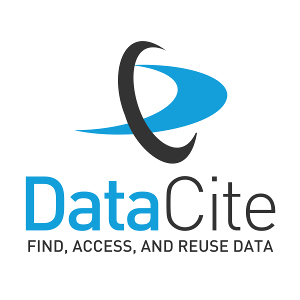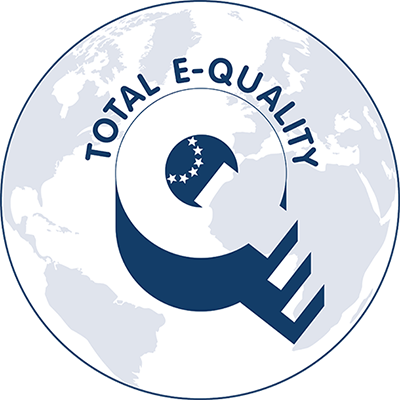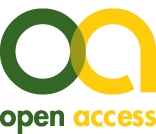Journal quality and standing: which aspects are relevant to open access?
Many researchers remain concerned that open access journals may be of lower quality than their subscription-based counterparts. However, this concern is unfounded: all the leading life science publishers apply rigorous peer-review procedures to their open access journals.
How to determine the quality of a journal
Several criteria can be used to assess the quality of a journal, but the most important criterion is whether it adheres to the peer-review standards established within its scholarly community. The reputation and prestige of the scientists and researchers that make up the Editorial Committee is another useful point of reference.
The journal’s content is another crucial factor in assessing its quality. Browsing the list of authors can offer useful insights, as it helps to see whether other respected researchers or institutions in your field have previously published in the journal. Additionally, it is important to check that the articles are relevant to the journal’s stated area of specialisation.
Visibility and impact of articles and journals published as open access
The visibility of a journal and the impact of a scholarly article are usually determined by the citation frequency. The greater visibility of open access journals means that they may offer a citation advantage. Recent studies have shown that open access articles have a 22 percent higher citation rate after controlling for discipline than those that are not openly accessible. The studies compared the frequency with which an article is cited with the average citation frequency of all articles in the same discipline. Overall, open access articles are therefore more visible and more frequently cited. It is generally true that open access journals are often still relatively young journals which require time to build up their reputation. It has also been observed that the difference in citation rates between open access journals and non-open access journals is continuing to level out in life sciences disciplines such as medicine.
Infiltration of open access journals by paper mills
Paper mills are companies that sell academic papers and provide various other fraudulent services in exchange for money. Their goal is to boost researchers’ output by enabling them to purchase the publications or authorship status that they need to build their reputation. Another “service” offered by paper mills is that of artificially inflating citation rates for previously published articles by referencing unrelated publications.
By flooding journals with mass-produced submissions, paper mills can significantly undermine the quality of their content. Many of the submitted articles do not present genuine research findings; instead, they are based on plagiarism or falsified data, or are generated by AI. Paper mills also corrupt the editorial process by embedding their own reviewers or editors, and the sheer volume of submissions can be a major drain on a journal's resources.
Estimates suggest that over three percent of life sciences publications can be traced back to paper mills. These publications have no scientific value and contaminate the state-of-the-art, as they do not adhere to standards of good scientific practice. Publishers and editors employ a range of measures to guard against infiltration by paper mills. Examples include verifying author names and email addresses, requesting access to the underlying research data, sharing information on submissions with other publishers, prohibiting major changes to a paper shortly before publication, and deploying technical solutions to detect automatically generated or manipulated content. Ideally, these checks are carried out before a manuscript enters peer review. If fraudulent articles are discovered after publication, they must be retracted. Such papers should never be cited, in order to avoid giving legitimacy to their findings.
Purchasing publications or authorship is a clear breach of good scientific practice.
Fake versions of reputable journals: predatory publishing and journal hijacking
Hijacked journals are a special kind of predatory journal. Designed to deliberately create confusion, they attempt to trick researchers into submitting their manuscripts to fraudulent imitations of reputable journals. Their aim is to collect publication fees without carrying out any proper peer review or editorial oversight.
In many cases, they set up mirror websites that closely mimic legitimate journals, using a URL that differs only slightly from the original journal’s website. Other variants on this strategy include launching a journal that has a very similar title to that of a reputable journal, taking over expired URLs, creating websites for print-only journals, or establishing an international website for journals that, in reality, are only local or national in scope.
There have also been reports of operators of such disreputable journals altering and redirecting links in academic databases. This also results in articles from these bogus journals being indexed in the database, a practice known as indexjacking.
It is recommended to thoroughly check journals before submitting a manuscript, especially if you are submitting a paper to the journal for the first time or if the submission process appears to have changed. Useful criteria for verifying whether a journal is legitimate can be found on the Think-Check-Submit website. Journals that have been identified as hijacked are listed in the Retraction Watch Hijacked Journal Checker.
Predatory and hijacked journals may contain a mix of articles, some produced in accordance with good scientific practice, others of inferior quality. They often harness generative AI to fabricate articles and entire back issues in order to give the impression that the journal is well established. This often involves reworking genuine articles from reputable journals and/or pasting in new author names, which are added without consent.
Because these journals lack proper peer review or any guarantee of quality, they are completely unsuitable for building an academic reputation. Deliberately submitting scientific papers to such journals in order to bypass the peer-review process is a clear breach of good scientific practice. Ideally, articles from these journals should never be cited in order to avoid granting them legitimacy.
In you are unsure whether a journal is reputable, we recommend consulting an academic library.
Journal quality at publishers with very high publication volumes
The quality of open access publishers that operate a wide range of journals and publish a high volume of papers is often called into question. Critics argue that they exhibit suspicious behaviours similar to those of predatory journals, or that they exert excessive pressure on authors and reviewers through rigid procedures and tight deadlines. The resulting reduction in turnaround times from submission to peer review, along with the proliferation of special issues, can give the impression that these publishers and journals are primarily focused on maximising revenue from publication fees.
Nevertheless, these journals are frequently popular among authors precisely because they publish papers so quickly – provided that they have a certain standing in the respective academic community.
We recommend judging each journal on its own merits. Consider factors such as the composition of the editorial board, the calibre of other authors and the quality of published articles to determine whether it is a suitable venue for your research. Feedback from colleagues on a journal’s peer-review process can also help evaluate its quality.
Due to the ongoing debate about quality, some publication funds have begun restricting fee coverage for certain journals. We therefore recommend checking with the body that will be providing your funding ‒ in many cases your institution’s library ‒ before submitting your article.
See also
Selecting a journal: how to find a suitable journal for publishing research results
Predatory or bogus journals in open access publishing
Disclaimer
Important note: The information and links provided here do not represent any form of binding legal advice. They are solely intended to provide an initial basis to help get you on the right track. ZB MED – Information Centre for Life Sciences has carefully checked the information included in the list of FAQs. However, we are unable to accept any liability whatsoever for any errors it may contain. Unless indicated otherwise, any statements concerning individual statutory norms or regulations refer to German law (FAQ updated 05/2025).
Contact

Dr. Jasmin Schmitz
Head of Publication Advisory Services
Phone: +49 (0)221 999 892 665
Send mail
References
Kullman, L. (2014). The Effect of Open Access on Citation Rates of Self-archived Articles at Chalmers [Conference Paper]. IATUL, 2-5 June 2014 – 35th Annual Conference – Aalto University, Espoo, Finland.
Moritz, A. (2013). Bibliometrische Analyse von Open-Access-Zeitschriften. Bibliometrie – Forschung und Praxis, 2. (German only)
Van Noorden, R. (2023). How big is science’s fake-paper problem? Nature, 623(7987), 466–467.
Grove, J. (2023). Leading Scientists Worldwide Are Victims of Fake Articles. Inside Higher Ed
Siler, K. et. al. (2021). Predatory publishers’ latest scam: bootlegged and rebranded papers. Nature, 598(7882), 563–565.
Abalkina, A. (2023). Challenges posed by hijacked journals in Scopus. Journal of the Association for Information Science and Technology, 75(4), 395–422.
Further information
Schmitz, J. (2024). Beyond Predatory Publishing: Weitere fragwürdige Angebote im wissenschaftlichen Publikationswesen. Scholarly Communications in Transition, 10. Januar 2024. (accessed 28.05.2025) (German only)
Schmitz, J. (2025). Wie Hijacked Journals und Paper Mills den wissenschaftlichen State-of-the-Art verunreinigen. b.i.t. online, 28 (1), S.19-26, 20. Febuar 2025. (accessed 28.05.2025) (German only)
Schmitz, J. (2024). Journal Hijacking: Neues Vorgehen stellt wissenschaftliches Publikationswesen vor weitere Herausforderungen. ZB MED Informationszentrum Lebenswissenschaften, 20. Februar 2024. (accessed 28.05.2025) (German only)
Related links
Think-Check-Submit
Retraction Watch Hijacked Journal Checker




